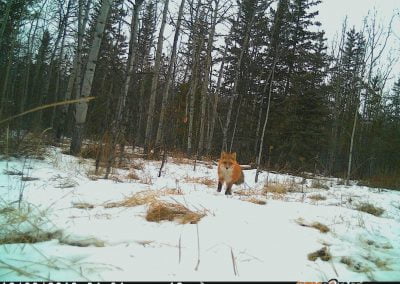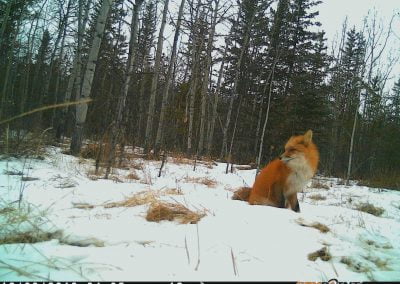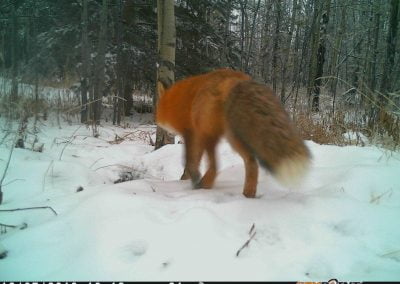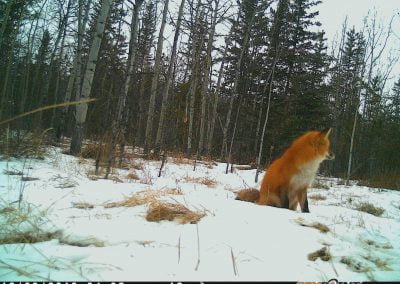
Gifts of the North
Gifts of the North
This time last year we released a very special limited edition hat (or toque as we Canadians like to call it). It was the product of generous Yukon businesses who care about Yukon’s wildlife. The 5 premium toques included a donation to the Preserve. They sold out in just a day and a half!
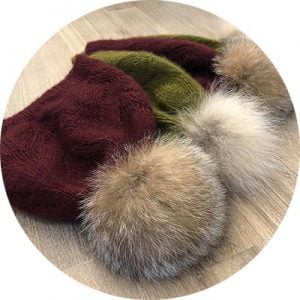
The partnerships have continued to grow and we’re really excited to release 2 different limited edition toque styles (4 available of each style) again this Christmas! These toques were made exclusively in the north, inspired by the north. The Yukon is home to incredible people who love to celebrate and honour the uniqueness of this land. This hat directly supports the diverse community that makes this place and its people so unique!
These limited edition hats go on sale at the Preserve on Friday, December 20th.
Hand-knitted in Whitehorse
Last year we were fortunate enough to connect with a very under-the-radar knitting talent, Liz Sutton of Treeline Knits located right here in Whitehorse. Liz, like the other featured small business owners, weaved from passionate hobby into notable entrepreneurs. She balances this passion with a full time job, a love of running and sharing time with friends and her fluffy companions in Yukon’s grand landscapes. Each of these 8 hats were hand knitted and fashioned by Liz Sutton, especially for the Yukon Wildlife Preserve.

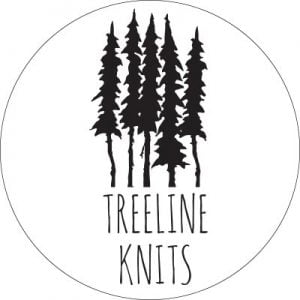
Toque 1: Local Hand Dyed 100% Candian Merino Wool
For the first toque, Liz sourced her wool from a little northern yarn shop with a big heart called Itsy Bitsy Yarn Store, located in downtown Whitehorse. The owner, Heather Sealey pours her heart into her store, into sharing her love and knowledge of knitting to every customer she encounters, and into encouraging and inspiring the local and northern flare.

Heather prides herself on working with other local proprietors who produce yarns, locally made wood and antler buttons, other Yukon made accessories, and in the case of this hat, local hand-dyed yarns. Crux Fibres is a product of local Brittany Vogt whose little hobby quickly turned into a business, “Dyeing yarn became an avenue for my deep desire to master creative arts. Playing with professional dyes and quality yarn isn’t easy, it’s a real challenge, but once you get over that crux, that difficult part and start to see the complimentary dance in the water, a real beautiful thing happens. A tapestry of colour emerges”. Who doesn’t love when passion turns into profit and pride in a beautiful piece of art. The wool Brittany uses is 100% Canadian merino wool.

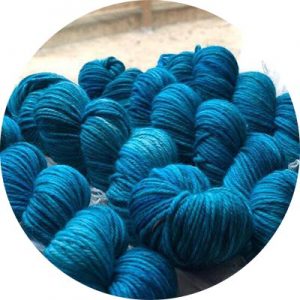
Toque 2: Canadian Muskox Qiviut Blend
For the second toque, Liz worked with Itsy Bitsy Yarn Store to source qiviut from Nunavut Qiviut.
Nunavut Qiviut in turn sources arctic fibres from the Kugluktuk area of the Yukon’s more eastern territorial neighbour, Nunavut. Here, and across the circumpolar north, wonderfully woolly, ice-age creatures roam the barren landscape. Muskox are formidable animals of the arctic whom managed to survive an era that most animals (including the woolly mammoth) did not. Muskox are both a majestic and extraordinary creature, not only because of its luxurious fibre but its remarkable place in history. Today, muskox continue to provide an incredible and valuable support system to the people and communities of this shared landscape.
The Inuit name for muskox is Umingmack, “the animal with skin like a beard.” The undercoat wool belonging to this animal gives it the ability to thrive in the extreme arctic environment but also is an animal harvested by Inuit’s for traditional purposes like winter sleeping mats, protein for elders and families.

Nunavut Qiviut works with these local harvesters and community members to purchase the qiviut wool for fibre production. This on the ground activity by Nunavut Qiviut supports food security, a wage economy, cultural continuity and traditional Inuit lifestyles in an ethical and fair manner.
Sustainably Trapped in the Yukon
A toque isn’t complete without a pom-pom. This year, Liz sourced furs through the Yukon Trappers Association and Yukon Wild Furs. Yukon Wild Furs donated locally and sustainably harvested lynx from Indigenous trapper and educators, George Bahm and Chris Hobbis’ trapline located in the South Canol Road area.
Owner of Yukon Wildlife Furs, Vanessa Aegirsdottir, might possibly have the smallest gift shop in the Yukon in square feet. But her mission is huge: “being an education beacon for Indigenous culture and worldviews”.

Bahm also sees great value in sharing fur harvesting practices with consumers and their relationship with the land. Wild fur trapping can be sustainable, ethically sourced and support traditional lifestyle when a fair price is offered for the fur as opposed to farmed furs.
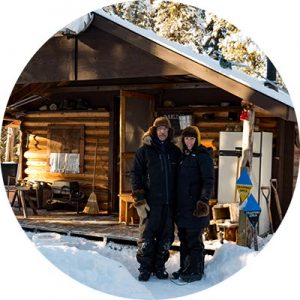
To the people who buy them, Bahm said they’re deepening their connection to the Yukon and the people who’ve trapped for generations.
I tell people that when they’re wearing fur we ask them to be mindful of the fact that an animal has given its life so we can adorn ourselves with its feathers, with its fur and by wearing those items they’re forever in a relationship with an animal. It’s more than just a pair of earrings.

A Community That’s Wild at Heart
The Yukon Wildlife Preserve is a non-profit charitable organization. In the 1970’s Danny Nowlan started accepting and caring for injured and orphaned wildlife at the Yukon Game Farm. Nearly 50 years later the Preserve continues to care for Yukon’s most vulnerable animals. Today we are a living centre of Yukon’s species that connects more than 30,000 visitors to the natural world, each year.
Find out more about what the donation with the purchase of the hat means for the Preserve at donate.yukonwildlife.ca .
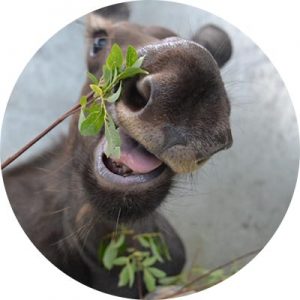
These toques represents so much more than fashion and warmth! It symbolizes the values and lifestyles of this unique territory and the people and animals that call it home. By purchasing this hat, you are supporting the people, their businesses and the land and animals of the north – Liz Sutton of Treeline Knits, Itsy-Bitsy Yarn Store, Yukon Wild Fur and local trappers, Brittany Vogt of Crux Fibres, Nunavut Qiviut, Yukon Wildlife Preserve – Wildlife Rehabilitation and a community that is wild at heart!

Lindsay Caskenette
Manager Visitor Services
Lindsay joined the Wildlife Preserve team March 2014. Originally from Ontario, she came to the Yukon in search of new adventures and new career challenges. Lindsay holds a degree in Environmental Studies with honours from Wilfrid Laurier University and brings with her a strong passion for sharing what nature, animals, and the environment can teach us.


